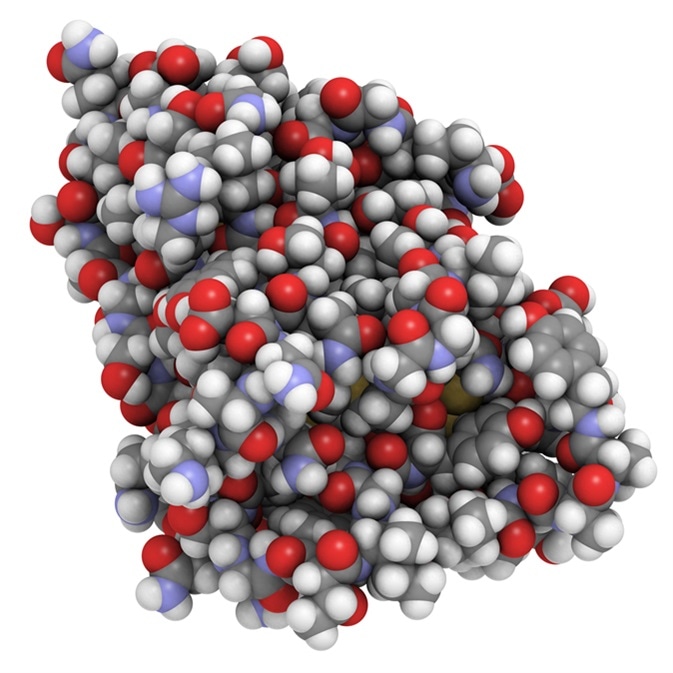Nanobodies are therapeutic proteins derived from the heavy chain domains of IgG of camels. Usually antibodies have two identical heavy (H) and light (L) polypeptide chains. However, camel species have a unique form of IgG that has no L chains.
A similar type of antibody has also been discovered in some cartilaginous fish. These antibodies recognize their targets using a single variable domain, known as VHH. As these antibodies are on the nanometer size scale, they have been named nanobodies. Nanobodies have unique properties due to their size and single chain nature that enables a wide range of applications.

Applications of Nanobodies
Nanobodies have a number of interesting applications, and many of them are early stages of development. These include basic research to clinical therapeutics. Some of these applications include the following:
Affinity capture reagents
Nanobodies have a larger binding surface and lower nonspecific background binding due to their small size and single domain format. As they bind in a monovalent manner, they can be eluted under mild conditions, and their high stability allows repeated use.
Crystallization chaperones
Nanobodies have been used to chaperone protein crystallization due to their ability to lock proteins in a particular conformation, stabilize flexible domains, and shield aggregating surfaces from solvents. They have been used in a number of protein crystallization studies, and same properties have also been exploited to stabilize amyloid-β protofibrils and prevent formation of mature amyloid fibrils.
Target imaging and immunomodulation
Nanobodies can be expressed inside cells fused with a fluorescent protein to track the activity of their antigen. They can also be used to functionally knock out the antigen in the cell, and fused with signal peptides to be targeted to specific subcellular compartments.
Biosensors
Nanobodies can be adapted for use in biosensors in the fields of medicine, environment, and food analysis. Their site-specific functional groups are easy to introduce and their small size allows for a high capacity binding surface, leading to higher sensitivity.
In vivo imaging
Nanobodies can be used as a tracer for noninvasive molecular imaging to study disease processes. Their small size allows for rapid tissue penetration and blood clearance.
Antivenom therapy
Polyclonal immunoglobulin fragments are being currently used to produce antivenoms. However, they have low potency and are not always effective. They also possess severe adverse effects. The small size of nanobodies allows them to diffuse through the body with a biodistribution that matches that of the small venom toxin, and after the nanobody captures the venom, the complex is still small enough to be rapidly eliminated by the kidneys.
Anti-infective agents
Nanobodies can be developed as an agent against bacterial, viral, and parasitic infections. A Phase I trial of nanobodies targeting respiratory syncytial virus showed that nanobodies could fight infection. Nanobodies lack the Fc region of a conventional antibody, so they do not neutralize and eliminate the pathogen. However, they have their own inherent neutralizing effect.
Immune-based therapeutics
Nanobodies can be used to combat cancer and other diseases by inhibiting ligand-receptor interactions, such as antagonizing anti-von Willebrand factor to block the initiation of thrombosis, or inhibiting anti-TNF-α to treat arthritis.
Bispecific nanobodies
Bispecific or multispecific antibodies can target more than one antigen at a time. Because nanobodies are monomeric, single-domain molecules, and small in size, they are good candidates to construct bispecific or multispecific constructs. Bispecific antibodies have been studied for their ability to target a disease or cancer cell and also specifically recruit another molecule or cell. The same approach could be used with nanobodies because of their small size and high stability.
Sources
- Nanobodies and their potential applications (https://www.ncbi.nlm.nih.gov/pubmed/23730699)
- A versatile nanotrap for biochemical and functional studies with fluorescent fusion proteins (https://www.ncbi.nlm.nih.gov/pubmed/17951627?dopt=Abstract)
- Directed selection of a conformational antibody domain that prevents mature amyloid fibril formation by stabilizing Abeta protofibrils (https://www.ncbi.nlm.nih.gov/pubmed/18042730?dopt=Abstract)
- Antithrombotic drug candidate ALX-0081 shows superior preclinical efficacy and safety compared with currently marketed antiplatelet drugs (https://www.ncbi.nlm.nih.gov/pubmed/21576702?dopt=Abstract)
- Formatted anti-tumor necrosis factor alpha VHH proteins derived from camelids show superior potency and targeting to inflamed joints in a murine model of collagen-induced arthritis, https://www.ncbi.nlm.nih.gov/pubmed/16736523?dopt=Abstract
Further Reading
- All Nanoscience Content
- Characterization of Nanoparticles
- What are Nanomicelles?
- Applications of Nanomicelles
- Pioneering British Nanoscientists
Last Updated: Feb 26, 2019

Written by
Dr. Catherine Shaffer
Catherine Shaffer is a freelance science and health writer from Michigan. She has written for a wide variety of trade and consumer publications on life sciences topics, particularly in the area of drug discovery and development. She holds a Ph.D. in Biological Chemistry and began her career as a laboratory researcher before transitioning to science writing. She also writes and publishes fiction, and in her free time enjoys yoga, biking, and taking care of her pets.
Source: Read Full Article
